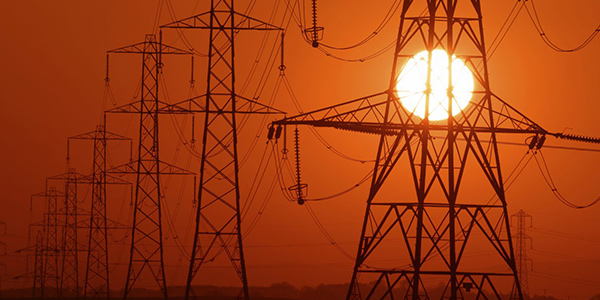CAISO called for extra capacity and conservation Thursday and put grid maintenance on hold as it faces a Labor Day weekend heat wave like the one that caused rolling blackouts and strained its system in mid-August.
“We’re lining up everything we can to be prepared for this as best we can,” said John Phipps, the ISO’s director of real-time operations.
In market notices Thursday, CAISO said it is “seeking any available capacity the ISO can procure under its Capacity Procurement Mechanism (CPM) or under section 42.1.5 of the ISO Tariff” from Saturday through Monday. It restricted maintenance operations, urged coordinators to schedule their load in the day-ahead market “considering anticipated high loads” and issued a statewide flex alert calling for voluntary electricity conservation. (The ISO has not yet suspended convergence bidding, as it did during the August heat wave.)
Much of the West will experience triple-digit temperatures during the holiday weekend — similar to the “heat storm” that engulfed many Western states Aug. 13-18 and forced CAISO to order rotating outages Aug. 14-15, an emergency step it hadn’t taken in nearly 20 years. (See Theories Abound over California Blackouts Cause.)
On Sunday, Las Vegas and Phoenix are expected to hit highs of 112 and 111 degrees Fahrenheit, respectively, the National Weather Service forecasted. NWS issued an excessive heat warning for Los Angeles and most of inland California. Even normally cool cities such as San Francisco and Portland, Ore., are expected to reach 90 F.
“A strong ridge will develop over much of the Western U.S.,” NWS said. “This will set the stage for … very hot temperatures, including a likelihood of seeing record-high temperatures. In some cases, the high temperatures are forecast to be as much as 20 to 25 degrees above normal, which will lead to many areas across the Great Basin and especially the Desert Southwest seeing temperatures well over 100 degrees.”
As in mid-August, California could run into a situation in which it is unable to draw on imported energy from neighboring states to meet its evening net peak demand, after the sun sets and solar power shuts down but air conditioning use remains high, CAISO officials said.
“The entire West is competing for supply going into this hot period,” said Mark Rothleder, vice president of market policy and performance. “We rely on what is a limited set of capacity in California and the West, and when you get to these high load levels, it’s stretching that capacity.”
Phipps said CAISO predicts peak demand of 44,237 MW on Saturday, 46,636 MW on Sunday and 45,060 MW on Monday. Those figures are typical of summer peak loads in California and fall far short of the ISO’s peak of 50,116 MW on Sept. 1, 2017, and 50,270 MW on July 24, 2006, both of which it met without resorting to rolling blackouts.
But CAISO’s supply-and-demand has changed dramatically in recent years, said Rothleder and Vice President of Operations Eric Schmitt during a press briefing Tuesday.
Fossil fuel plants, particularly coal-fired plants, have retired across the West. Neighboring states are serving higher demand from population growth while their own ramping capacity diminishes, leaving less for California to import during West-wide heat waves, Rothleder said.
Schmitt said 10,000 to 12,000 MW of solar, including 7,000 to 8,000 MW of behind-the-meter solar, now ramp down at sunset. Compared with the past, “it’s really apples and oranges,” Schmitt said.



